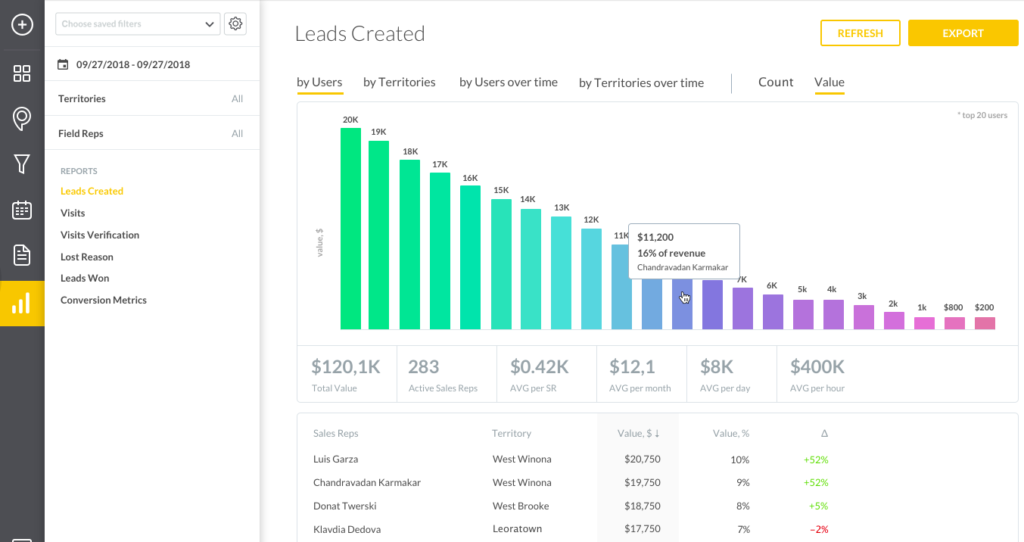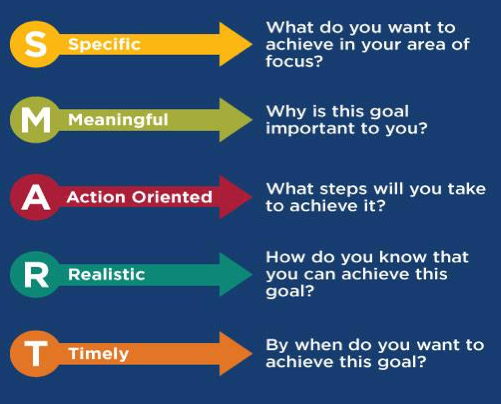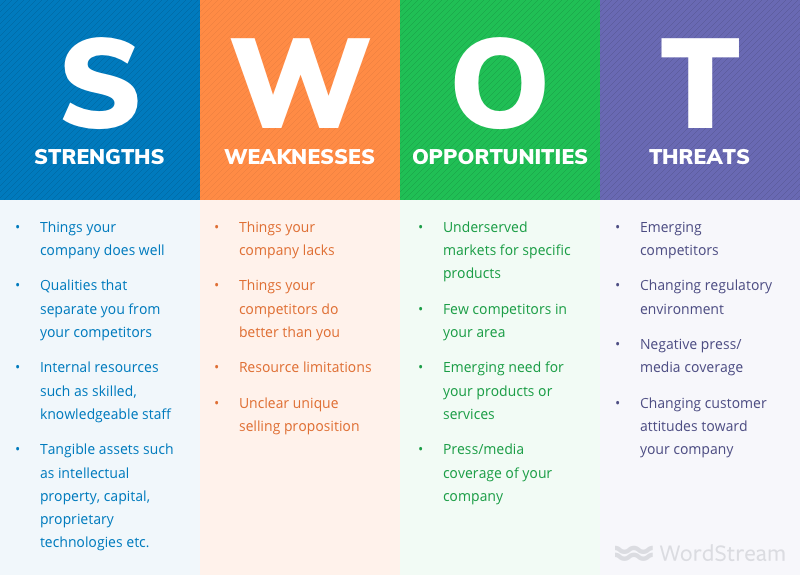Sales meetings are a necessary part of managing a sales team. However, they’re often unpopular because the sales team feels like they are a waste of time.
Many sales managers do not have a sales meeting agenda, choosing instead to wing it or follow a plan to which only they are privy. This strategy is also not an indicator of success and leads to the feelings that the unpopular meeting is, in fact, a waste of time.
The most successful sales meetings are ones which utilize a sales meeting agenda because they help keep your meeting organized, on-track, and on-time.
The benefits of improving your sales meeting agenda include:
Define the purpose of the meeting
Communicates the priorities for the sales team and provides an organized process to facilitate productivity
Increases engagement with the priorities, as well as boosting their accountability to their targets
Opens the flow of dialogue and collaboration, which can lead to improved team bonding and performance
It helps organize all these items and set expectations for the goals of the meeting.
In this article, we’ll take a closer look at sales meeting agendas, explore what items we recommend as topics, and share some share tips and tricks for how to use the sales meeting agenda to run the session.

Ready to learn how to run your sales meeting efficiently and effectively? Let’s get to it…
11 Sales Meeting Agenda Topics
1. Introduction
The intro is a chance to help everyone transition from what they were doing into what they are doing now. Chances are they could use a second to get into “meeting mode.”
The intro should be brief; a quick review of what you are going to talk about at this session or a recap of what you talked about at the last one.
One important caveat about the introduction: it should be positive. An upbeat beginning is an excellent way to transition your team into meeting mode, but with energy and anticipation rather than dread and anxiety.
2. Sales Team Performance Review
Once everyone is settled in and ready to work, you should review sales team performance per your key metrics. The idea is not to call anyone out or do a deep dive on the numbers but have an overview of how everyone’s performance is on the four or five metrics you have identified as vital to their evaluation.
Tools like SPOTIO’s Sales Tracker can help you have an idea of what is going on in the field. Plus, the reporting features make preparing it for the meeting easy.

Next, you should have a sales update. Not only does it hold your salespeople accountable, but it also helps motivate everyone.
Once you have covered sales, go over the activity of the people in the room. Having people talk about what they are doing and what is working for them is an excellent way for the sales team to collaborate with and learn from one another.
3. Pipeline and Prospect Presentation
Obviously, you don’t need the whole rundown. Focus instead on the most significant opportunities and also any that have been in the pipeline for a while. The team can help make suggestions on how to move these opportunities on to the next step.
This agenda item is also where team members should share feedback. As the customer-facing part of the team, they have unique access to what’s happening in the market. It can be an invaluable resource for your organization to share and document this information.
4. Scheduled Sales Activity
Another excellent way to keep your sales team thinking about what’s next is to request a scheduled sales activity report.

Technology can help the preparation or review for this agenda item. SPOTIO’s Sales Territory Management functionality gives you an excellent overview of each sales rep’s territory and scheduled activity. Moreover, you can outline exactly where to go and what action is needed at each prospect, which streamlines the prep and frees up more time to spend selling.
5. Quarterly Sales Goals and Objectives Review
At the beginning of each quarter, you likely assigned some specific goals for each of your team members that will help them be successful. The sales meeting agenda should ensure these objectives are analyzed from time to time.
What the quarterly goals are vary by the rep and the organization for whom they sell. Some organizations assign training objectives for sales reps, like clinical education for highly specific medical or dental equipment. Others might have trade show goals for their sales reps, like bike equipment manufacturers attending the big bike races in a region.
No matter what they are, you should touch base on them from time-to-time to ensure that the progress you expect is made in those areas. Setting SMART (Specific, Measurable, Attainable, Relevant, and Time-Related) goals is an excellent way to stay on track toward a long-term goal.

6. Tips and Training Time
It is an excellent rule of thumb that every meeting should provide value for your sales reps. Adding to the sales meeting agenda some time for training on relevant skills is an excellent way to ensure that value.
Some organizations do something called a Pitch Round Table. This activity involves bringing your best pitch tips and tricks and sharing them with the group. Then in a collaborative effort, everyone takes the best of the best to improve their pitch.
There are quite a few options for training time. You can have everyone bring two common objections and have everyone brainstorm ways to overcome them. You can also show a video, share a blog post, or stage a role play for different sales skills or scenarios.
7. Internal Company Updates and Housekeeping Items
When everyone is together, it can be an excellent time to cover important company business and any housekeeping issues for the team. From policy changes to feedback from other departments, including these areas can help—just be sure to move through them efficiently.
As the sales manager, including these items on the sales meeting agenda is crucial to upholding a transparent culture. As the manager, you often have information that the team does not. Be sure they understand the company’s strategy, are aware of any new product launches and know about the latest marketing campaign.
8. Success Story Sharing
Sharing success stories has two essential goals for your sales meeting agenda. First, it gives an opportunity for a sales rep to bask in the glow of success while telling their colleagues about a significant win. Second, it provides other members of the team ideas for what they can do to create success stories of their own.
It’s also an excellent way to keep a positive vibe in the meeting. Energizing the team with a great story of success can contribute to a productive meeting.
9. Competitive Intelligence or Market Trends

Knowing what is going on across town or across the country with your competitor can help you respond to threats to your business. Also, having an idea of what is going on in your industry as a whole will react appropriately with the way you approach prospects in the territory.
Assign every sales rep one or two competitors. Then have them report back over time on what they know about the competitions offer, products and pricing, and any news or changes at their organization. Then, have the team brainstorm on how to respond.
Another idea is to assign one competitor to the entire group and have time devoted each week to take a close look at the designated company. You can analyze their business strategy, proposed unique selling proposition, marketing campaigns, and even how they target their territories and brainstorm strategy to counteract them.
Technology has ways to use this data to enable your team to qualify leads in the field. SPOTIO’s Lead Machine helps you target the best possible areas for canvassing by providing up-to-date data.
10. Opportunities, Threats, Roadblocks and Miscellaneous Items
Opportunities and Threats are two items typically used in a SWOT analysis, which stands for Strengths, Weaknesses, Opportunities, and Threats. Knowing what openings could be present for your team to capitalize on and preparing strategies to counteract for any pressures or risks to the territory that can derail you are an excellent activity for the group.

Roadblocks can be obstacles that could deter you from your goals in the coming week. Perhaps there is an internal roadblock because another department has an issue, like a product going on back-order or weather-related delays in logistics or maybe a key person in the organization will be out of the office at the end of the week. Discussing these roadblocks in the meeting can have reps already thinking about ways to manage them in the coming days.
Miscellaneous items or “walk-ons” are areas that were not on the agenda but needed addressing. These issues might have come up in a discussion during the meeting or one of the team members introduced it. Use a couple of minutes to see if it is something that can be addressed quickly or if it should be set aside for the next week’s sales meeting agenda.
11. Action Items and Expectations
A great way to close a successful sales meeting is to review any action items. Everyone should know what they need to do when they leave the meeting and plunge back into their territories.
Also, clearly communicate your expectations about what a complete action item is. For example, if you want a sales rep to follow up on a competitor’s marketing offer, and you want all the collateral and links to their media ads, be sure you say exactly that to the sales rep. (Otherwise, it’s your fault if they do not come back with the right materials—at least in part, anyway.)
Bonus Sales Meeting Agenda Item…Motivational Topics: Ending on a positive note is crucial to a successful sales meeting agenda. As a sales manager, your job is to encourage the best performance from each of your team members. Motivating them is a vital part of this effort.
Some sales managers like to share the company’s success at this point in the meeting or the success of the sales team as a group overall or in a particular area. Others might share a success story from another industry or from past or present sales team members. Some people like to share philosophy concepts or a pertinent quote from sales training organizations.
You can get creative with this one. It is all about creating that engagement to do a little extra to hit the sales goal.
15 Tips to Improve Your Sales Meeting Agenda
What you include on the agenda is only part of your sales meeting agenda success. How you run the meeting is vital.
1. Start (and end) your sales meetings on time.
One way to prove to your team that sales meetings are not time-wasters is to commit to a start and end time. It also shows you value and respect their time.
Your sales meeting also serves as an example of how you want your team to treat customers. Be a good example and keep the meeting on track and on time.
2. Focus on the agenda.
Losing focus in a sales meeting is an easy thing to do. Salespeople (and sales managers) like to talk. Also, phones, tablets, and watches tend to interrupt our lives, too. It’s up to you to keep the meetings on track with the agenda.
One way to keep the meeting focused is to set up “house rules,” which can be anything from whoever is holding the talking stick has the floor to no technology at the table.
You can also use a timer to keep discussions within a specified time limit. If the debate isn’t over, you can always assign the topic to the next meeting.
Another idea is to make a rule that no one can introduce new business once the agenda is set. Instead, you can assign that topic to the next sales meeting agenda.
3. Distribute the agenda before the meeting.
Like anything in sales, you need to plan for success with your sales meeting agenda. It will communicate the purpose of the meeting, establish the topics to be covered and set the proper expectations for the team.
Sending the sales meeting agenda out two or three days before the meeting not only solidifies your plan for the meeting ahead of time, but it also sets proper expectations for the team, both on what they should prepare and what they will learn.
4. Confirm the purpose of the meeting, for the attendees and for you.
Salespeople do not appreciate when it is unclear why you want to meet. When you confirm the purpose of your meeting through the agenda items you include on the plan, you clarify your reason. Not only that, establishing the intention helps you focus your time on the most pertinent sales items you need to relate to the team.
5. Choose goal-achieving topics.
Once you have a set reason for your meeting, the agenda items you include should roll-up to that purpose. In other words, the topics need to contribute to the confirmed purpose of the meeting.
Let’s say the theme for the sales meeting is pipeline replenishment and maintenance. Agenda items should include pipeline filling and management topics like prospecting, qualifying, and scheduling demonstrations. Another idea is to practice overcoming objections to move leads through the pipeline faster. Maybe you have your best prospector share their cold calling techniques with the team.
What you don’t want to do is to set the goal of pipeline management topics and spend the meeting covering the sales planning for next quarter. The agenda needs to focus the energy on the issue at hand.
6. Estimate the duration of the meeting.
Another way to assure your team that the meeting is not a waste of time is to propose a meeting duration. You can do this for the overall session, or you can include time estimations on each topic. We recommend reviewing past agendas to produce accurate time estimations.
To stay on track during the meeting, you can set a timer or alarm on your phone. Make a commitment that when the alarm goes off, you will end the session within two minutes if you are still talking. That should give you enough time to wrap things up or make a plan to resolve whatever you haven’t yet covered.
7. Tailor the length of the meeting based on the topics you need to cover.
While we are on the subject of estimating time, we should mention that some meetings take longer than others. Not all sales meeting agendas are created equal when it comes to duration.
Per MeetingKing.com, research shows that people’s attention drops off after 30 minutes. The drop off in attention span increases as the meeting time does. Therefore, the shorter your meeting, the more engaged your sales team is likely to be.
Also, many people come from one meeting only to go straight into another. Then, the second meeting starts late, and so on. If you were to schedule your sales meeting to end five minutes before the half-hour or hour, you could help eliminate that timeline slide.
The default option in many meeting scheduling systems is one hour. However, you should only have an hour-long meeting when absolutely necessary. Examples of when a more extended session is required could be for an annual review, a project with many participants that need to weigh in or discuss portions of the project or to introduce a new product or offer launch.
Avoid scheduling meetings longer than an hour. The occasions where meeting for more than an hour is necessary are rare. Some examples could be an outside trainer is attending, or a new technology implementation is underway. However, for all regular sales meetings, strive to be short and sweet regularly.
8. Review numbers and set goals at a rapid pace.
Taking time to hear from everyone about the sales activity in the sales meeting can be a useful part of the sales meeting agenda. However, it should not be a section to which a lot of time is devoted.
The point of the exercise is to have your sales team accountable and ready to contribute to the meeting—with a possible side-effect of igniting that competitive spirit so prevalent in successful salespeople. If you spend too much time in this area though, you could have the opposite effect.
Remember that your CRM can provide sales reporting. If you want a more comprehensive review at the meeting, then run the reports right before the sales meeting and distribute. Have your team share the highlights and low lights and then, move on to other topics.
9. Focus on Shared Learning and Improvement.
Saleshacker.com recommends devoting time on your sales meeting agenda to shared learning and collaborative improvement. Have the team members present something they learned over the previous week to the team. Then, discuss as a group what the team member discovered.
An example could be an innovative way to automate follow up with prospects. If a team member discovers something that could help everyone automate lead maintenance for their pipelines, have them share it with the team. Then, the other team members could ask questions or offer suggestions that might tweak the solution even more.
Saleshacker.com also recommends having a place where people can submit their learning (possibly email or an online shared document). Then you can add it to the agenda for the discussion.
10. Ensure your meetings deliver value.
Your meetings should all provide something that will help your sales team achieve their goals in either sales or customer satisfaction. Each session should have something they can use the same day toward either of these goals. From role-playing to best-practice sharing, industry trends to TED talks, you have lots of sources for this value-delivering agenda item.
11. Consistency is key.
If you want your team to value and respect your sales meeting, have a consistent meeting date and time. When you frequently cancel or skip it, you send a message that the sales meeting is not important.
12. Review common objections and overcoming them.
One thing your team members have in common regardless of experience is hearing objections. Sharing how to overcome these objections once encountered is an excellent item for your sales meeting agenda.
The value of this exercise is two-fold. First, it is morale boosting for newer team members to know that even the battle-hardened experts face objections. Second, it gives everyone new ideas and ways to position the product or service in the market and increase the value proposition they are selling.
13. Allow for others to present and discuss.
Having an interactive sales meeting is energizing to the team. Listening to one person talk for 25 minutes (or more) is not. Ensure that your sales meeting agenda includes time for lively discussion or other presenters to keep the team engaged and excited about the topic at hand.
A discussion is a team-building exercise. For sales team members that are struggling, the supportive environment and instructional nature of their team members can lift their spirits and inspire them to continue to strive for excellence.
14. Mind the “Before’s” and “Afters.”
You should establish prep tasks for the meeting. Everyone should know what you expect from them in detail.
After the meeting concludes, you should do a quick recap of the topics and assign follow up tasks via email or group message. For example, if you discussed learning more about your competition, assign people research tasks. If you trained on overcoming objections, have each rep prepare two times he or she used the techniques suggested and what happened as a result.
On the subject of follow up, if you have a pertinent issue to discuss with one member of the team, be sure to discuss it after the meeting. The sales meeting agenda should focus on issues that everyone needs to hear and consider, rather than the specifics of one individual.
15. Motivate the team and promote your desired culture.
The sales meeting is your time to motivate the team. It’s even better when you use the items you include on your sales meeting agenda to help them drive each other with team-building discussions or collaborative problem-solving.
Also, the sales meeting might be the only place where the team interacts with people at the company regularly or for any length of time. So, the sales meeting agenda should contain the type of content that promotes the culture you want to foster with the sales team.
Go out with a bang.

EZ Cater.com, an online order site for office catering, suggests ending the meeting on a high note to energize the team. The team should finish the meeting feeling positive about the company, their product and their ability to hit their goals, and galvanized enough to go out and do it.
There are many ways to “end on a high note.” You can pay a compliment to their presentations and recap what they contributed to the sales meeting. You can share a success story from your past or, better yet, from one of them. You can tell a joke, provided you have talent in this area, and it’s HR-approved 🙂
Bonus Tip: Let the team own the meeting, not you.
It’s easy to establish a tone to a sales meeting where you are the teacher, and your team are the students. If you are the center of the agenda and control all the content, as well as being the one who answers all the questions, then the team is likely to feel like this meeting is about you.
However, the sales meeting should be about them, not you. Through what you include on the sales meeting agenda, you should let the team own the meeting. You should facilitate and manage it more than “run the show.”
Open up the floor to your team to inspire their engagement. Also, having other people lead the topic will decrease the “classroom” feel and increase their ownership in the issue at hand.
Your team is more likely to participate in a genuine way when they feel like they are part of the meeting rather than a party to it
From defining the purpose to communicating expectations, the sales meeting agenda sets the stage for increasing sales team engagement and accountability. Also, the items you include present the type of culture you expect for your team and facilitates collaboration, which boosts morale and increases team bonding.
Keeping your meetings focused and streamlined is another vital contribution a sales meeting agenda can provide. The most successful sales meetings don’t just happen; they are planned ahead of time with careful consideration and deliberate organization.
Perhaps most importantly, an efficient meeting is effective at providing value to your team. And when the team gains something that will help them improve their performance, they will not think of your sales meeting as a waste of time. Instead, they will consider it an investment in their success.
_______
Questions or comments? Contact SPOTIO at [email protected] or comment below.
SPOTIO is the #1 field sales acceleration and performance management software that will increase revenue, maximize profitability, and boost sales productivity.
Want to see a product demonstration? Click here to see how SPOTIO can take your sales game to the next level.


